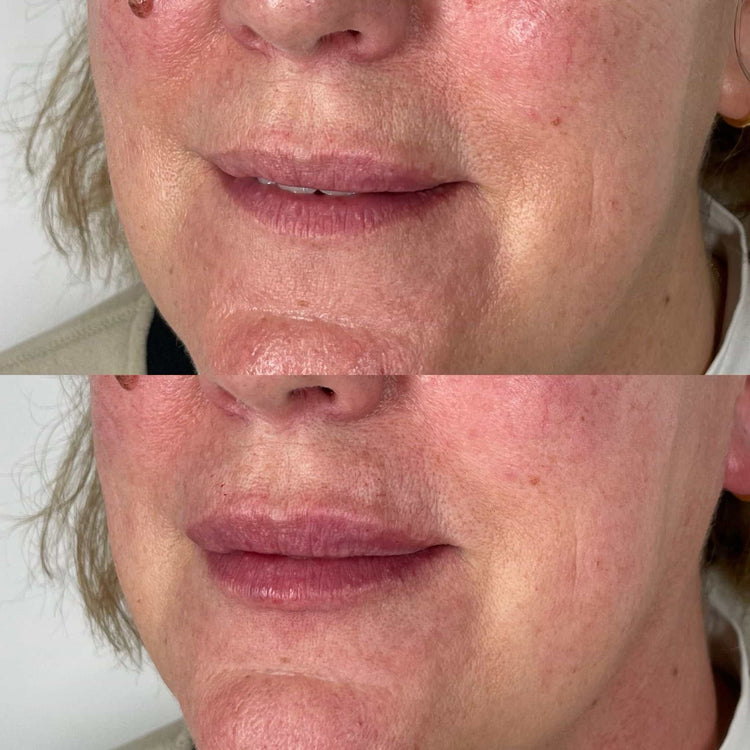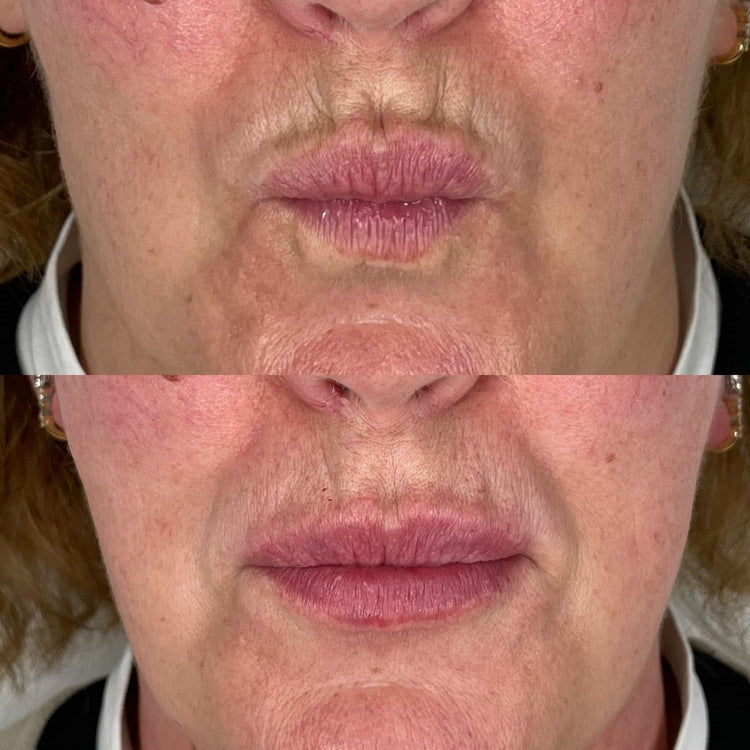Can Smokers’ Line Fillers Improve Overall Lip Volume
The Impact of Smoking on Lip Volume
Smoking has long been known to negatively impact various aspects of health, and its effects on facial appearance are no exception. One noticeable consequence of smoking is a decrease in lip volume.
Smoking’s Effects on Collagen and Elastin
Smoking’s detrimental impact on lip volume stems from its effect on collagen and elastin, two essential proteins responsible for skin elasticity and firmness. When inhaled, smoke damages these proteins, leading to their degradation and reduced production. This breakdown of collagen and elastin results in thinner lips that appear smaller and less plump.
Changes in Blood Flow to the Lips

Nicotine, a key component of cigarettes, also constricts blood vessels, including those supplying the lips. This reduced blood flow limits oxygen and nutrients reaching the lip tissue, further contributing to their thinning and loss of volume.
The diminished blood flow can also lead to a pale appearance in the lips as well.
Dehydration and Tobacco Use
While smokers may experience reduced lip volume due to the damaging effects of tobacco smoke, it’s important to understand that lip fillers are not a solution for addressing the underlying health issues caused by smoking.
Lip fillers provide temporary cosmetic enhancement by injecting substances like hyaluronic acid into the lips to increase their fullness. They do not address the damage inflicted on collagen and elastin or improve blood circulation.
Quitting smoking is the most effective way to minimize further lip volume reduction and promote overall oral health.
Can Smokers’ Line Fillers Improve Lip Volume?
Smoking has a detrimental effect on lip volume, primarily due to its impact on collagen and elastin production and blood flow. Nicotine constricts blood vessels, reducing circulation to the lips, while smoke damages essential proteins responsible for skin elasticity. This combination leads to thinner, less plump lips. While smokers may consider lip fillers as a solution for restoring lost volume, these temporary cosmetic enhancements do not address the underlying health issues caused by smoking.
The Science Behind Lip Fillers
Smoking has a detrimental effect on lip volume, primarily due to its impact on collagen and elastin production and blood flow. Nicotine, a key component of cigarettes, constricts blood vessels, reducing circulation to the lips. This limited blood flow restricts oxygen and nutrients from reaching the lip tissue, contributing to thinning and loss of volume.
Furthermore, smoke directly damages collagen and elastin, two proteins crucial for skin elasticity and firmness. This damage leads to their degradation and reduced production, resulting in thinner lips that appear smaller and less plump.
While smokers may consider lip fillers as a solution for restoring lost volume, these temporary cosmetic enhancements do not address the underlying health issues caused by smoking. Lip fillers provide an illusion of fullness by injecting substances like hyaluronic acid into the lips, but they do not repair the damage inflicted on collagen and elastin or improve blood circulation.
Considerations for Smokers Seeking Fillers
Smoking has a detrimental effect on lip volume, primarily due to its impact on collagen and elastin production and blood flow. Nicotine, a key component of cigarettes, constricts blood vessels, reducing circulation to the lips. This limited blood flow restricts oxygen and nutrients from reaching the lip tissue, contributing to thinning and loss of volume.
Furthermore, smoke directly damages collagen and elastin, two proteins crucial for skin elasticity and firmness. This damage leads to their degradation and reduced production, resulting in thinner lips that appear smaller and less plump.
- Smoking diminishes blood flow to the lips, depriving them of essential nutrients and oxygen, leading to thinning and loss of volume.
- Smoke directly damages collagen and elastin, crucial proteins responsible for skin elasticity and firmness, resulting in thinner, less plump lips.
While smokers may consider lip fillers as a solution for restoring lost volume, these temporary cosmetic enhancements do not address the underlying health issues caused by smoking. Lip fillers provide an illusion of fullness by injecting substances like hyaluronic acid into the lips, but they do not repair the damage inflicted on collagen and elastin or improve blood circulation.
Quitting smoking is the most effective way to minimize further lip volume reduction and promote overall oral health.
Types of Fillers Suitable for Smokers
Smoking has a detrimental effect on lip volume, primarily due to its impact on collagen and elastin production and blood flow. Nicotine, a key component of cigarettes, constricts blood vessels, reducing circulation to the lips. This limited blood flow restricts oxygen and nutrients from reaching the lip tissue, contributing to thinning and loss of volume.
Furthermore, smoke directly damages collagen and elastin, two proteins crucial for skin elasticity and firmness. This damage leads to their degradation and reduced production, resulting in thinner lips that appear smaller and less plump.
Lip fillers are not a solution for addressing the underlying health issues caused by smoking.
While smokers may consider lip fillers as a solution for restoring lost volume, these temporary cosmetic enhancements do not address the underlying health issues caused by smoking. Lip fillers provide an illusion of fullness by injecting substances like hyaluronic acid into the lips, but they do not repair the damage inflicted on collagen and elastin or improve blood circulation.
Quitting smoking is the most effective way to minimize further lip volume reduction and promote overall oral health.
Potential Risks and Challenges
While smokers may seek cosmetic solutions like lip fillers to combat the noticeable decrease in lip volume associated with smoking, it’s crucial to recognize the inherent risks and challenges involved.
Increased Risk of Complications
Using lip fillers as a solution to smoking-related lip thinning does not address the underlying health issues caused by tobacco consumption.
- Fillers offer only a temporary cosmetic fix, masking the effects without resolving the damage inflicted on collagen and elastin.
- Continued smoking can further exacerbate lip volume reduction, negating any benefits gained from fillers.
- Individuals who smoke may experience increased risk of complications associated with filler injections, such as infections or adverse reactions due to compromised blood circulation.
Filler Migration and Discoloration
Using lip fillers as a solution to smoking-related lip thinning does not address the underlying health issues caused by tobacco consumption.
Fillers offer only a temporary cosmetic fix, masking the effects without resolving the damage inflicted on collagen and elastin.
Continued smoking can further exacerbate lip volume reduction, negating any benefits gained from fillers.
Individuals who smoke may experience increased risk of complications associated with filler injections, such as infections or adverse reactions due to compromised blood circulation.
Another potential concern is filler migration.
When hyaluronic acid fillers are injected, they can sometimes migrate from the intended area over time.
This migration can lead to an uneven appearance or the formation of lumps.
Smoking may increase the risk of filler migration because it negatively affects blood circulation and tissue elasticity.
Discoloration is another potential risk associated with lip fillers, especially in smokers.
Nicotine can stain the skin, making it more susceptible to discoloration around the injection sites.
This discoloration may appear as a bluish or purplish hue and can be difficult to treat.
Impact on Smoking Habits
Using lip fillers as a solution for smoking-related lip thinning does not address the underlying health issues caused by tobacco consumption.
Fillers offer only a temporary cosmetic fix, masking the effects without resolving the damage inflicted on collagen and elastin.
Continued smoking can further exacerbate lip volume reduction, negating any benefits gained from fillers.

Individuals who smoke may experience an increased risk of complications associated with filler injections, such as infections or adverse reactions due to compromised blood circulation.
Another potential concern is filler migration. When hyaluronic acid fillers are injected, they can sometimes migrate from the intended area over time.
This migration can lead to an uneven appearance or the formation of lumps.
Smoking may increase the risk of filler migration because it negatively affects blood circulation and tissue elasticity.
Discoloration is another potential risk associated with lip fillers, especially in smokers.
Nicotine can stain the skin, making it more susceptible to discoloration around the injection sites.
This discoloration may appear as a bluish or purplish hue and can be difficult to treat.
- How Long Does 05 Ml Lip Filler Last - August 19, 2025
- How Long Before You See Results With Dermal Fillers - August 17, 2025
- How Kratom Capsules Can Help With Migraines And Headaches - August 14, 2025
Author
Related Posts
Smokers’ Lines Vs Other Lip Wrinkles How Fillers Address Both
Smoker’s Lines Smoker’s lines, those etched vertical creases around the mouth, are often mistaken for just another sign of aging. While they...
Read out all